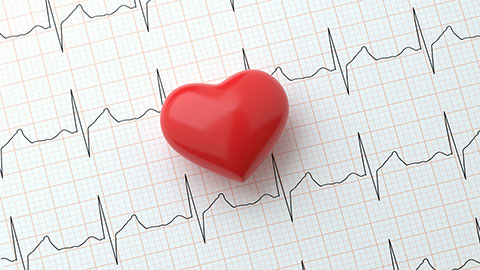Abnormal Heart Rhythm / Arrhythmia
- What it is
What is abnormal heart rhythm / arrhythmia?

Arrhythmia, also known as abnormal heart rhythm or irregular heartbeat, refers to any change in the normal sequence of electrical impulses produced by the heart. The abnormal heart rhythms can be slow or fast in rate, having extra beats, or have rhythm irregularity.
Age increases the probability of experiencing an arrhythmia. It can occur in people who do not have structural heart disease. Arrhythmias often occur during and after
heart attacks. Some types of arrhythmias, such as ventricular
tachycardia and
fibrillation, are serious and potentially life-threatening. Arrhythmias can result in poor blood circulation to the vital organs of the body.
Slow heart rates (less than 60 beats per minute) are called
bradycardias. Fast heart rates (more than 100 beats per minute) are called tachycardia.
The most common type of heart rhythm problem is
atrial fibrillation (AF), which occurs when there is abnormal electrical activity within the upper chambers (atria) of the heart, resulting in the lower chambers (ventricles) to beat in a fast and irregular manner.
While some arrhythmias are harmless, it is important to rule out any serious arrhythmias (abnormal heart rhythms) or pre-existing heart problems.
Complications of cardiac arrhythmias
These arrhythmic heart palpitations can have serious implications:
Supraventricular tachycardia (SVT)
This is a prevalent arrhythmia in young adults This is experienced as a sudden burst of rapid heartbeats that begin and end abruptly, lasting for seconds or hours. SVT is usually not life threatening.
This fast and irregular palpitation occurs in the atria or upper chambers of the heart and could last a few minutes to an hour. Atrial fibrillation arrhythmias could become chronic and lead to stroke. It is seldom life-threatening, but the heart palpitations could indicate underlying coronary artery disease or heart valve disorders.
Ventricular tachycardia (VT)
Ventricular tachycardia is a very rapid, but regular heartbeat of 100 beats or more a minute occurring in the lower chambers (ventricles) of the heart.
Sustained heart palpitations lasting more than 30 seconds are considered a medical emergency. They could indicate pre-existing heart diseases such as coronary artery disease or heart valve disorders.
Ventricular fibrillation (VF)
If ventricular tachycardia is left untreated, it will lead to a life-threatening condition called ventricular fibrillation, characterised by very fast and very irregular heartbeats. It usually precedes a heart attack. You could lose consciousness within seconds and die within minutes.
